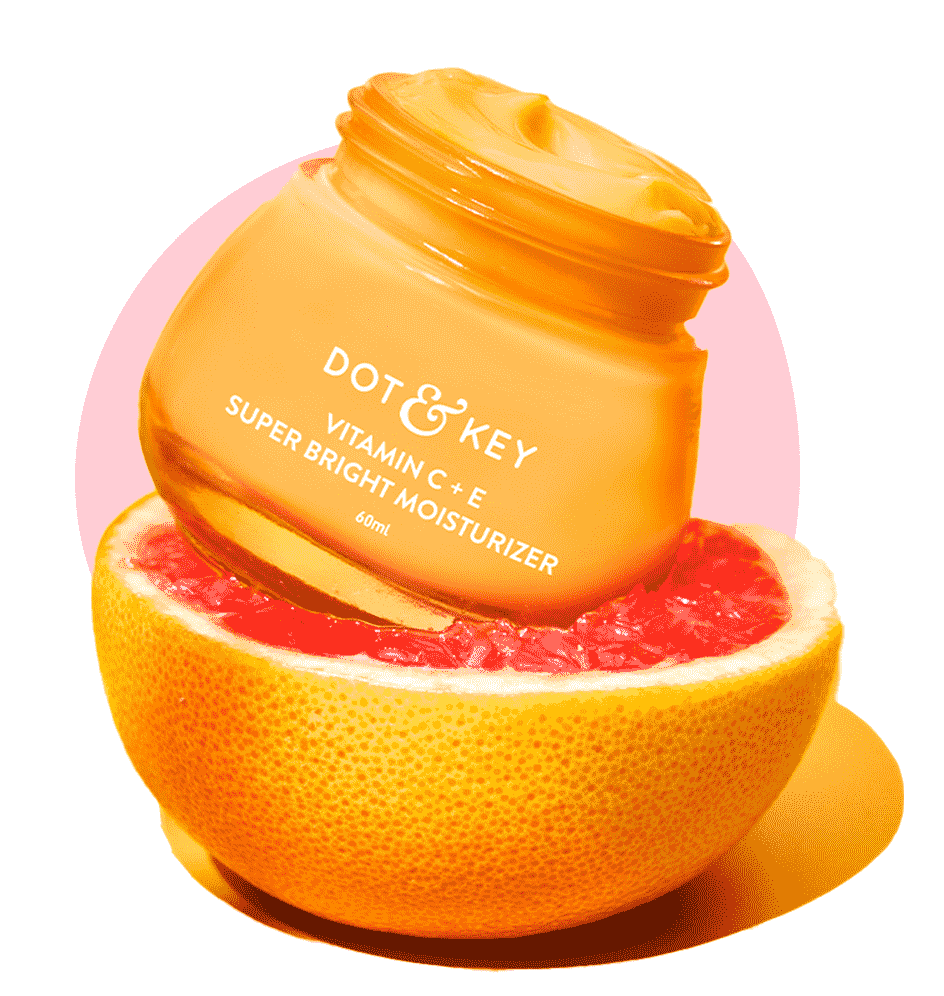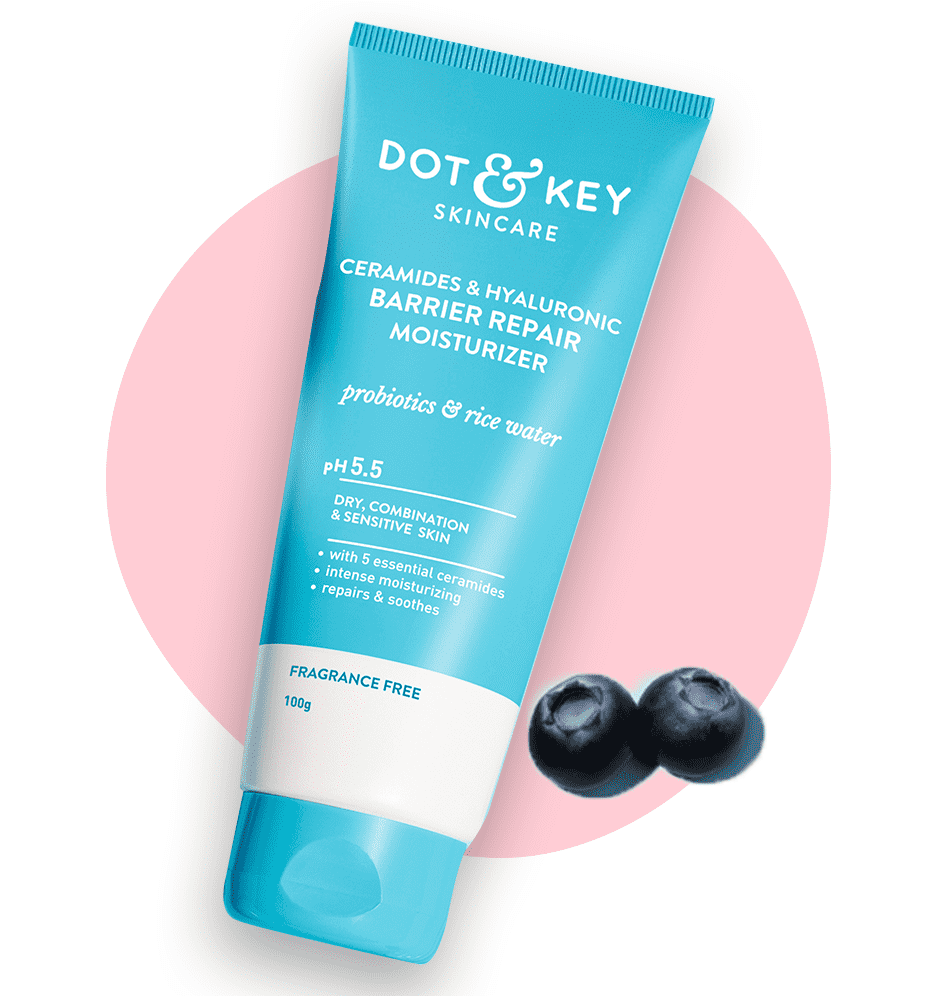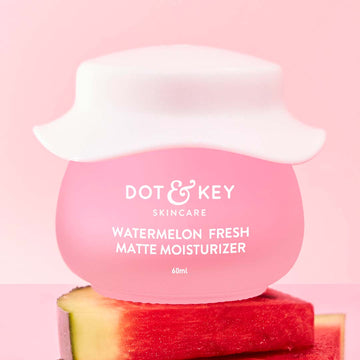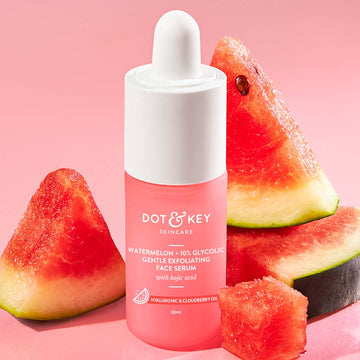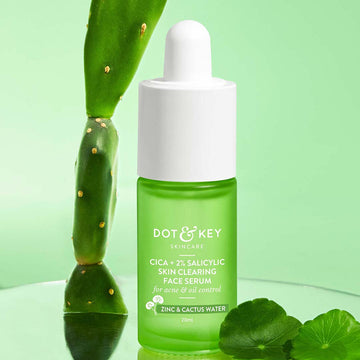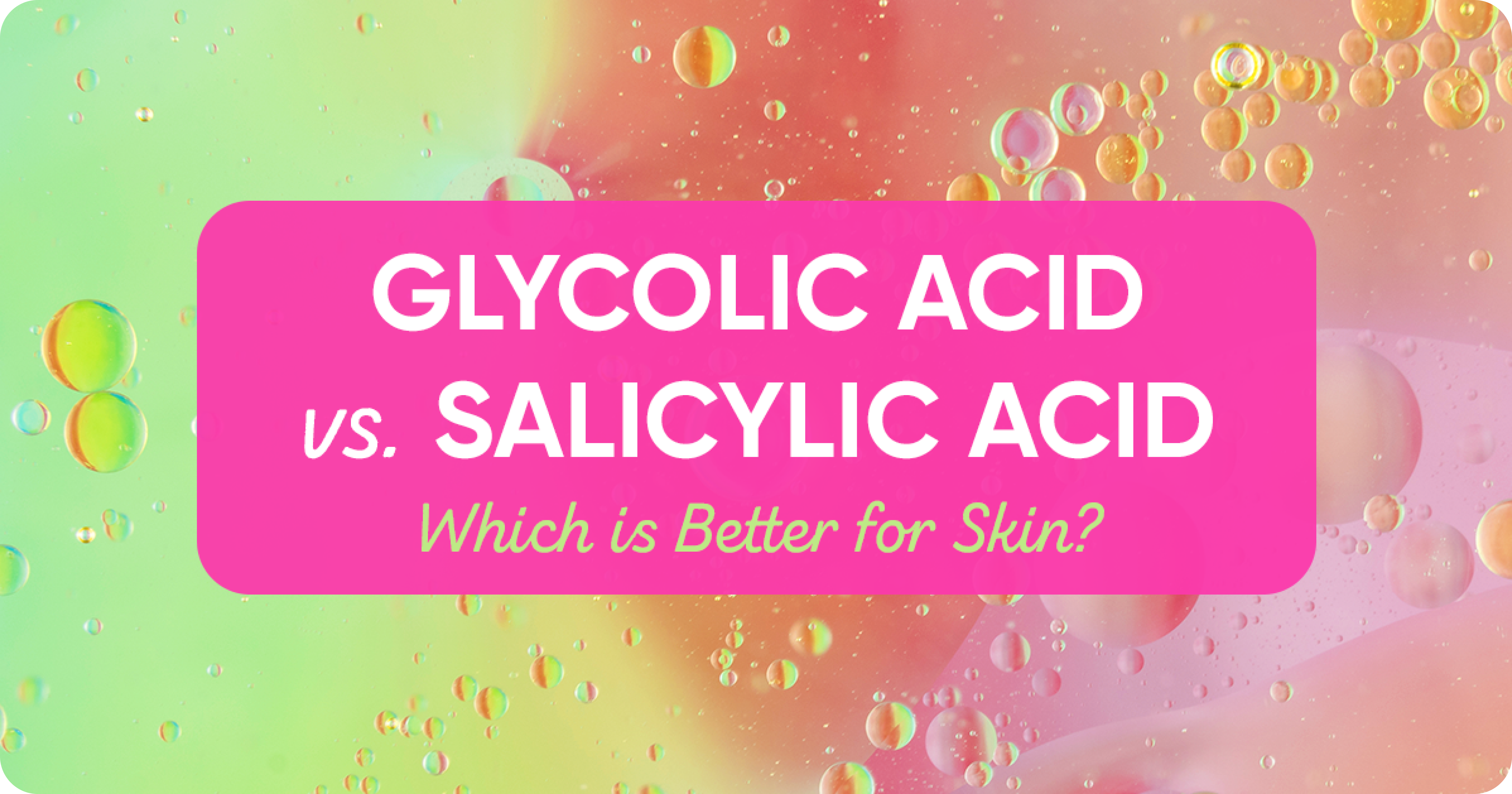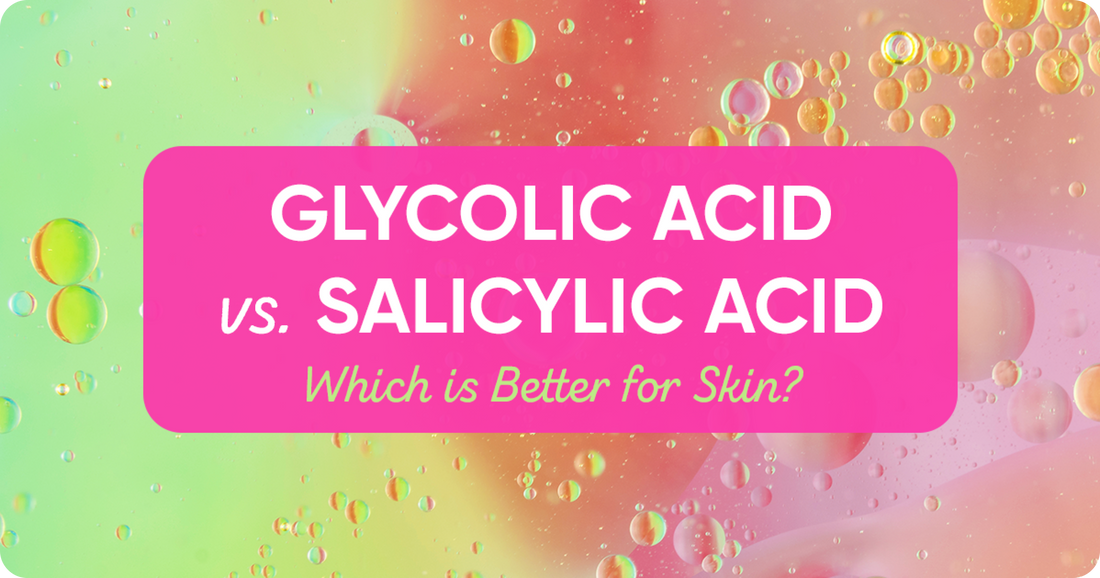
When it comes to exfoliation, two powerhouse ingredients often steal the spotlight—glycolic acid and salicylic acid. But which one is right for you? While glycolic acid smooths and brightens by working on the skin’s surface, salicylic acid dives deep into pores to combat breakouts. Whether you’re battling dullness, acne, or uneven texture, understanding how these ingredients work can help you make the best choice for your skin.
Let’s break it down and see which acid wins the skincare game—or if they’re better together!
What is Glycolic Acid?
Glycolic acid is an alpha-hydroxy acid (AHA) derived from sugarcane. It exfoliates the skin by dissolving the bonds between dead skin cells on the surface, revealing smoother and brighter skin.
Key Benefits of Glycolic Acid:
- Exfoliates Surface Skin: Smooths rough texture and removes dead cells.
- Brightens Skin Tone: Improves dullness and fades dark spots.
- Stimulates Collagen: Reduces fine lines and wrinkles for firmer skin.
- Improves Skin Texture: Minimizes rough patches and uneven areas.
- Enhances Absorption: Preps the skin for better absorption of other skincare products.
What is Salicylic Acid?
Salicylic acid is a beta-hydroxy acid (BHA) derived from willow bark. It’s oil-soluble, allowing it to penetrate deep into the pores to remove excess oil and unclog them, making it particularly effective for acne-prone skin.
Key Benefits of Salicylic Acid:
- Clears Clogged Pores: Dissolves oil and dead skin buildup inside the pores.
- Treats Acne: Reduces blackheads, whiteheads, and active breakouts.
- Exfoliates Deeply: Improves skin texture by targeting debris in the pores.
- Reduces Oil Production: Helps control sebum for oily skin types.
- Soothes Inflammation: Calms redness and irritation caused by acne.
How They Compare
| Feature | Glycolic Acid | Salicylic Acid |
|---|---|---|
| Primary Function | Surface exfoliation and brightening. | Deep pore cleansing and acne treatment. |
| Skin Type | Best for normal, dry, or ageing skin. | Best for oily, combination, or acne-prone skin. |
| Exfoliation Depth | Works on the surface of the skin. | Penetrates deeper into pores. |
| Oil Control | Minimal; hydrates more than controls oil. | Excellent; reduces sebum production. |
| Acne Treatment | May help with post-acne marks but not active acne. | Highly effective for active acne and clogged pores. |
| Brightening | Fades hyperpigmentation and evens tone. | Reduces redness and improves texture over time. |
| Anti-Ageing Benefits | Stimulates collagen and reduces fine lines. | Minimal anti-ageing effects. |
| Irritation Potential | Moderate; may cause sensitivity in beginners. | Moderate; can cause dryness or irritation if overused. |
| Frequency of Use | 2–3 times a week for beginners. | Daily or 2–3 times a week depending on skin tolerance. |
Which is Better for Your Skin?
The choice depends on your skin type and concerns:
Choose Glycolic Acid If:
- Your primary concern is dullness, uneven texture, or hyperpigmentation.
- You have normal, dry, or ageing skin and want to reduce fine lines or improve elasticity.
- You're looking for a brightening exfoliant to enhance radiance.
- You want to prep your skin for better absorption of serums and moisturizers.
Choose Salicylic Acid If:
- Your primary concern is acne, blackheads, or clogged pores.
- You have oily or combination skin and want to reduce shine.
- You're struggling with active breakouts or want to prevent future ones.
- You're looking for a deep-cleansing exfoliant to target excess oil.
Can You Use Glycolic Acid and Salicylic Acid Together?
Yes, but combining them requires caution to avoid over-exfoliation, which can lead to irritation, dryness, or a compromised skin barrier.
- Glycolic Acid Exfoliates the Surface: It removes dead skin cells and brightens.
- Salicylic Acid Cleanses Pores: It targets oil and debris within the pores.
How to Use Them Together:
- Use them on different days to prevent over-exfoliation.
- If using them in the same routine, apply salicylic acid first to clear pores, then follow with glycolic acid for surface exfoliation.
- Always follow with a moisturizer to prevent dryness and support the skin barrier.
- Use sunscreen during the day, as both acids increase sun sensitivity.
Who Should Use Both?
- Combination Skin: Use salicylic acid on oily, breakout-prone areas (like the T-zone) and glycolic acid on dry or dull areas.
- Acne-Prone Skin with Hyperpigmentation: Salicylic acid treats acne, while glycolic acid fades post-acne marks.
- Ageing Skin with Clogged Pores: Glycolic acid smooths fine lines, and salicylic acid unclogs pores.
FAQs About Glycolic Acid and Salicylic Acid
1. Should I Use Glycolic Acid or Salicylic Acid First?
If using them together (sparingly), apply salicylic acid first to clear pores, then glycolic acid for surface exfoliation.
2. Can I Use Them Every Day?
- Glycolic Acid: Start with 2–3 times a week and increase as tolerated.
- Salicylic Acid: Can be used daily or every other day, depending on your skin’s tolerance.
3. Do I Need Sunscreen?
Yes, both acids make your skin more sensitive to UV damage, so always use SPF 30 or higher during the day.
Common Mistakes to Avoid
-
Over-Exfoliating:
Using both acids too frequently can damage your skin barrier. Start slowly and monitor your skin’s response. -
Skipping Sunscreen:
Both glycolic and salicylic acid increase sun sensitivity, making sunscreen essential. -
Not Hydrating:
Always follow with a moisturizer to replenish hydration and prevent dryness.
Science Backing
- Glycolic Acid: Studies in the Journal of Dermatological Science show glycolic acid’s effectiveness in improving skin texture, tone, and elasticity.
- Salicylic Acid: Research in the Journal of the American Academy of Dermatology highlights salicylic acid’s ability to treat acne and reduce oil production.
- Combination Use: Dermatologists recommend alternating glycolic and salicylic acid for comprehensive exfoliation and acne treatment, as noted in the Journal of Clinical and Aesthetic Dermatology.
Conclusion
There’s no one-size-fits-all answer—both glycolic acid and salicylic acid bring their own magic to the table! If you’re looking to brighten, smooth, and fight signs of aging, glycolic acid is your go-to glow booster. But if breakouts, excess oil, and clogged pores are your biggest concerns, salicylic acid is your skincare superhero.
The best part? You don’t have to choose just one! With the right routine, you can harness the power of both for a balanced, radiant complexion. So, which one will you reach for first?








